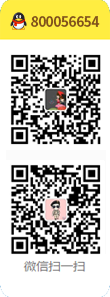
本文是一篇文学研究research paper代写案例。主要讲诉的是牧师查尔斯Lutwidge道奇森,他的笔名刘易斯·卡罗尔最出名的,写了很多小说,诗歌和短篇小说在他的一生,但他最有名的为他的孩子们的“无厘头”的小说:爱丽丝梦游仙境的续集透过玻璃看。他的作品,尤其是上面提到的两个,这么多年来影响了无数读者,并引用他的著作可以从歌曲“大白兔”由杰斐逊飞机的矩阵三部曲每一种类型的介质上。虽然两本书的目的是为孩子的娱乐,他们是充满了象征和隐藏的批判。他巧妙的文字游戏,利用逻辑和推理,和令人难以置信的想象力是他的写作风格,这是通常被称为“文学无稽之谈。”在读者与卡罗尔的工作经验不多的所有商标,这个词似乎完美的形容卡罗尔的混乱并经常东拉西扯的风格,但是当更多的彻底检查,它变得很明显,这个“无厘头”有一个更为深远的意义
想代写您的research paper?登录Bonrun官网www.lunwenhui.com
Reverend Charles Lutwidge Dodgson, best known by his pen name Lewis Carroll, has written many novels, poems, and short stories in his lifetime but his most famous for his children's “nonsense” novels: Alice's Adventures in Wonderland and the sequel Through the Looking Glass. His works, especially the two mentioned, have influenced countless readers over the years, and references to his writings can be found in every type of media from the song “White Rabbit” by Jefferson Airplane to the the Matrix trilogy. While both books are intended for a child's entertainment, they are full of symbolism and hidden critique. His clever wordplay, use of logic and reasoning, and incredible imagination are all trademarks of his style of writing, which is often referred to as “literary nonsense.” To readers with little experience with Carroll's work, this term seems to perfectly describe Carroll's confusing and often rambling style, but when more thoroughly inspected, it becomes obvious that this “nonsense” has a far deeper meaning.
Alice's Adventures in Wonderland is about a young girl, Alice, who gets bored doing her multiplication tables one day and follows a white rabbit into a hole. Through this hole, she ends up falling into Wonderland, a place where there are potions and foods that can change the drinker's size, a tea party thrown by a Mad Hatter and a March Hare, and a Caucus-race that everybody wins. As Alice journeys through Wonderland she meets stranger and stranger, or, as she says, “'Curiouser and curiouser!'” (15), characters such as a hookah-smoking caterpillar sitting on a mushroom and a grinning Cheshire Cat who is not all there all the time: “'Well I've often seen a cat without a grin,' thought Alice; 'but a grin without a cat! It's the most curious thing I ever saw in all my life!'” (94). She runs into three gardeners who are painting the Queen of Hearts' roses from white to red so she will not cut their heads off. Alice and the Queen play a game of croquet in which the mallets are live flamingos and the balls are hedgehogs until the Queen eventually orders the beheading of everyone but Alice, the King, and herself. The book ends with Alice discovering that the whole experience was a dream from falling asleep while doing her multiplication. The story itself became much more popular upon the release of the Disney animated version. Many parts of this movie, however, were not originally found in the book but are instead found in its sequel research paper代写.
Through The Looking Glass is very similar to Alice's other journey, but this time she steps through her mirror, also known as a looking glass, and finds herself on a giant chess board inhabited by the Red and White chess pieces from the set in her room. When she asks the Red Queen if she can play, she is told she can take the place of a white pawn and start on the second square and will become a queen if she reaches the eighth. She eventually meets Tweedle Dee and Tweedle Dum who tell her the poem “The Walrus and the Carpenter.” She later meets Humpty Dumpty who tells her that he can make words mean whatever he wants and then proceeds to explain to her the meaning of the poem “Jabberwocky.” Alice is then taken prisoner by a Red Knight and later rescued by a White Knight, both of whom keep falling off their horses, and guided safely to the eighth square where she is made a queen and invited to the Red and White Queen's nonsensical dinner party, after which she once again wakes up and realizes that the whole thing was just a dream.
The poem “The Walrus and The Carpenter” from Through the Looking Glass is a classic tale narrated by Tweedle Dee and Tweedle Dum about a walrus and a carpenter who, while strolling down the beach one sunny night, convince a large bunch of oysters to take a walk with them: “Their shoes were clean and neat-/ And this was odd, because, you know,/ They hadn't any feet” (74-75). After much talk of whimsical nonsense, the walrus and the carpenter eat the unsuspecting oysters. There are many speculations on what the symbolism behind this poem actually is, but one theory, addressed in the movie Dogma, suggests that it is about religions tricking their followers. According to this theory, the walrus represents Eastern religions as either Buddha or Ganesha, while the carpenter represents Jesus and all Western religions. The two of them trick the helpless oysters, representing the innocent masses, with their words and then use them for their own gain, which in this case is as food. Many argue that this is not the true meaning behind the poem since Carroll was also an Anglican clergyman, but it is also noted that he was pushed towards his clergy position by his father and eventually grew to dislike the whole of the Anglican Church. The true meaning of the poem may never be known since Carroll never told anyone, and it was one of many things left unexplained in his diaries.
“Jabberwocky” is yet another famous poem from Through the Looking Glass, containing many of the characteristics that earned Carroll's works the title “literary nonsense.” This poem is first read by Alice when she holds the book containing it up to her mirror, and the first stanza is later told by her to Humpty Dumpty when he claims to be able to explain any poem ever invented and a good many that haven't been invented yet. “Jabberwocky” is about a boy who is warned by his father to beware the Jabberwock, a great beast with jaws that bite and claws that catch, and so takes his vorpal sword and seeks the beast. When they meet, the boy slays the monster and takes its head back to his father to receive his praise. Humpty Dumpty explains to Alice that many of the words in the poem are portmanteaus, or words with two meanings packed into them. For instance, “slithy” means both “lithe” and “slimy,” while “mimsy” is “flimsy” and “miserable” at the same time. He also clears up the rest of the nonsense words in this poem such as “outgribing,” which he says is something between bellowing and whistling with a sneeze in the middle.
The first stanza goes: “Twas brillig, and the slithy toves / Did gyre and gimble in the wabe / All mimsy were the borogoves / And the mome raths outgrabe” (126). As Humpty explains it to Alice, this loosely translates to, It was four in the afternoon and the slithy toves, a mix between a badger, a lizard, and a corkscrew, went round and round the grass-plot of a sundial until they had worn holes in the ground. The borogoves, thin, shabby birds with their feathers sticking out, were mimsy and the mome raths, sorts of green pigs that lost their way, outgribed. This style of making up words to describe altogether new concepts or creatures as he pictured them has been compared to that of Dr. Seuss: it provides entertainment to children who laugh at these nonsense words, while at the same time has its own meaning when explained.
Lewis Carroll had a writing style unlike any seen before his time. His “literary nonsense” has provided entertainment for countless children, while amusing and stimulating the minds of adults at the same time. While many of the characters and events in Alice in Wonderland and Through the Looking Glass are known or debated symbols or references to something else, their true meanings could only ever be understood by Carroll himself.
Works Cited
Carroll, Lewis. Alice's Adventures in Wonderland. New York, New York: Bantam Doubleday Dell Publishing Group, Inc, 1992.
Carroll, Lewis. Through the Looking Glass. New York, New York: Bantam Doubleday Dell Publishing Group, Inc, 1992.
Goldfarb, Nancy. "Carroll's 'Jabberwocky.'" The Explicator 57.2 (Wntr 1999): 86(3). Expanded Academic ASAP. Gale. UMass Dartmouth. 6 Feb. 2013
MacArthur, Fiona. "Embodied Figures of Speech: Problem-Solving in Alice's Dream of Wonderland." Atlantis, revista de la Asociación Española de Estudios Anglo-Norteamericanos 26.2 (Dec 2004): 51(12). Expanded Academic ASAP. Gale. UMass Dartmouth. 6 Feb. 2013.
文档下载:




额 本文暂时没人评论 来添加一个吧
发表评论